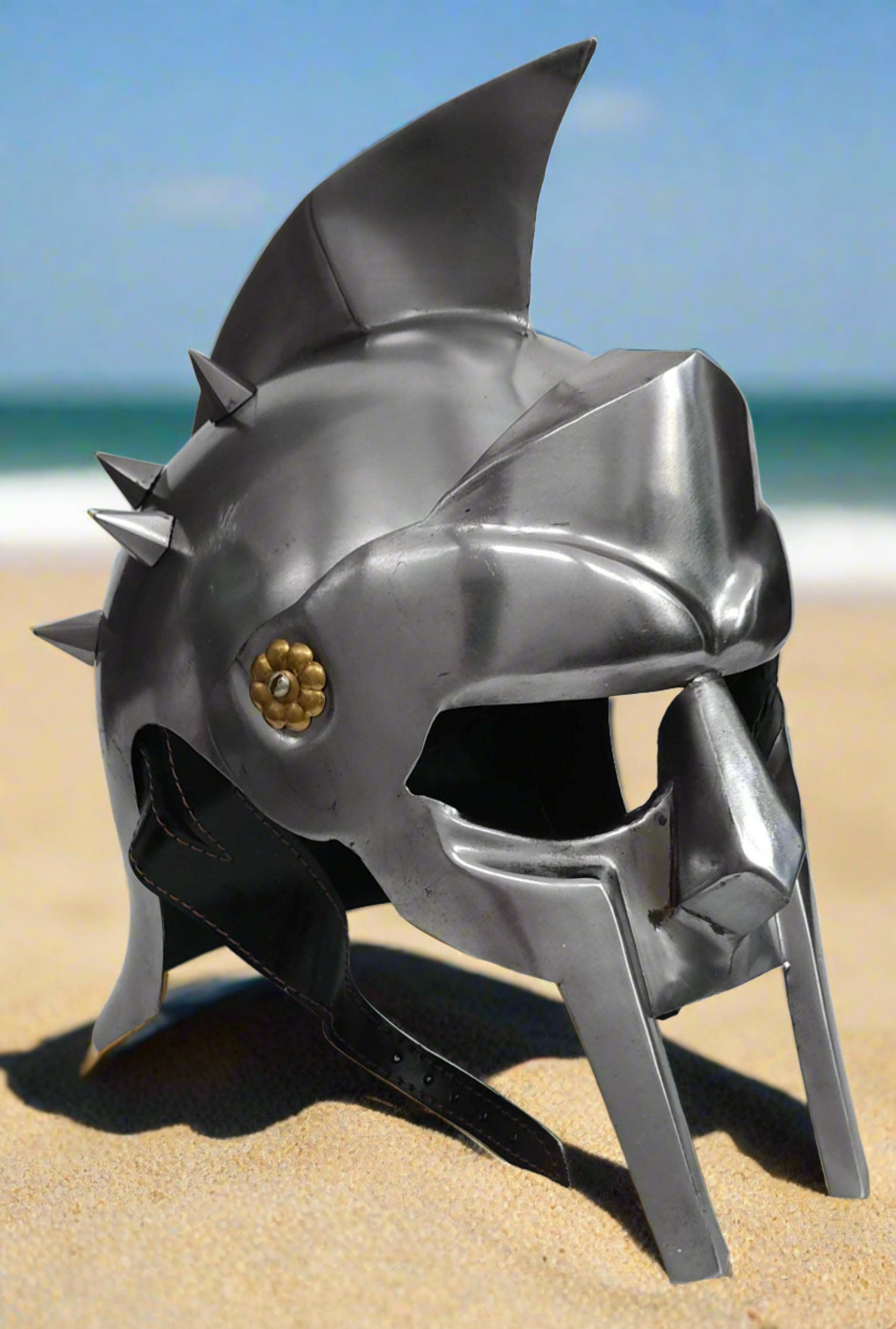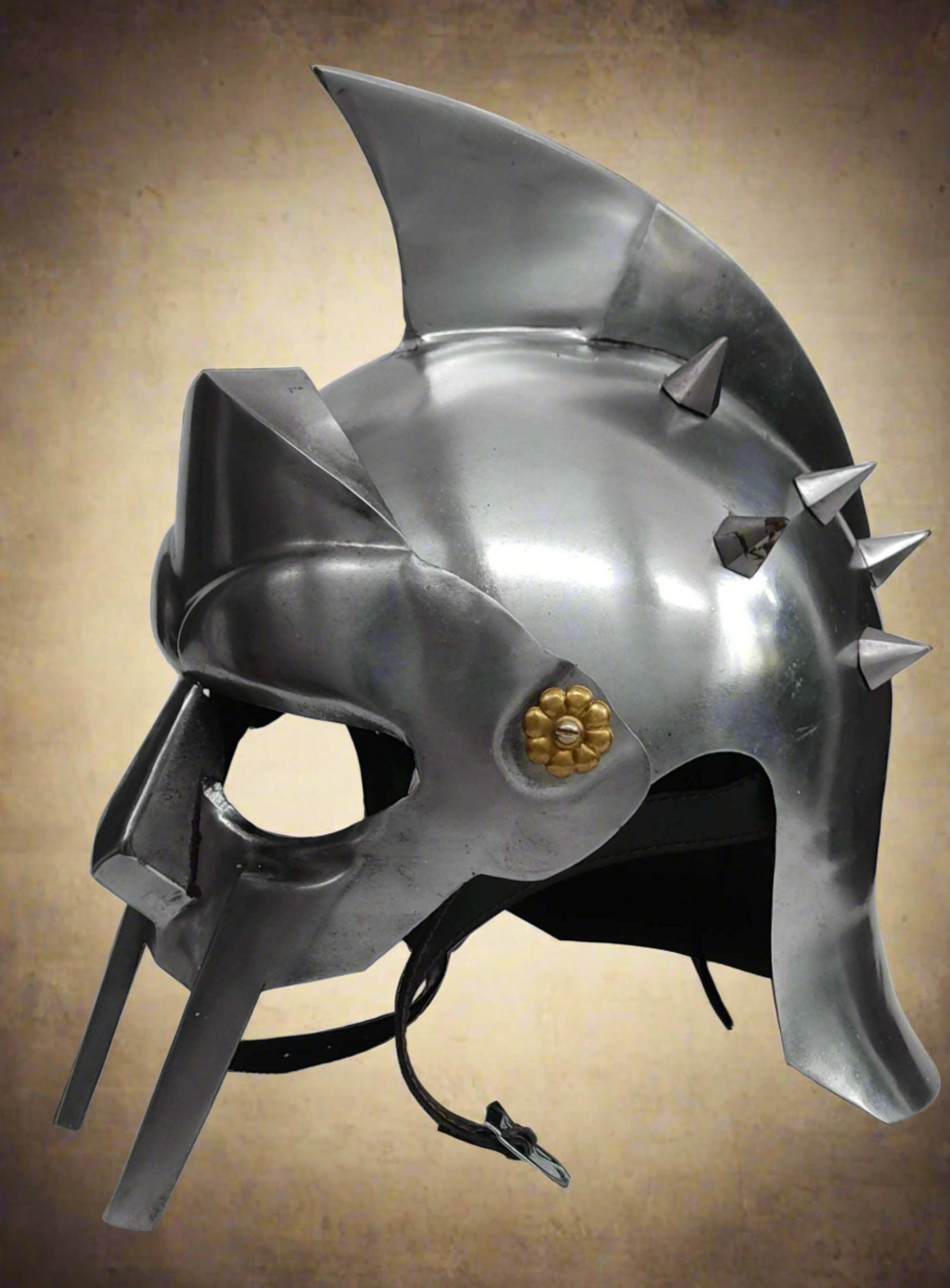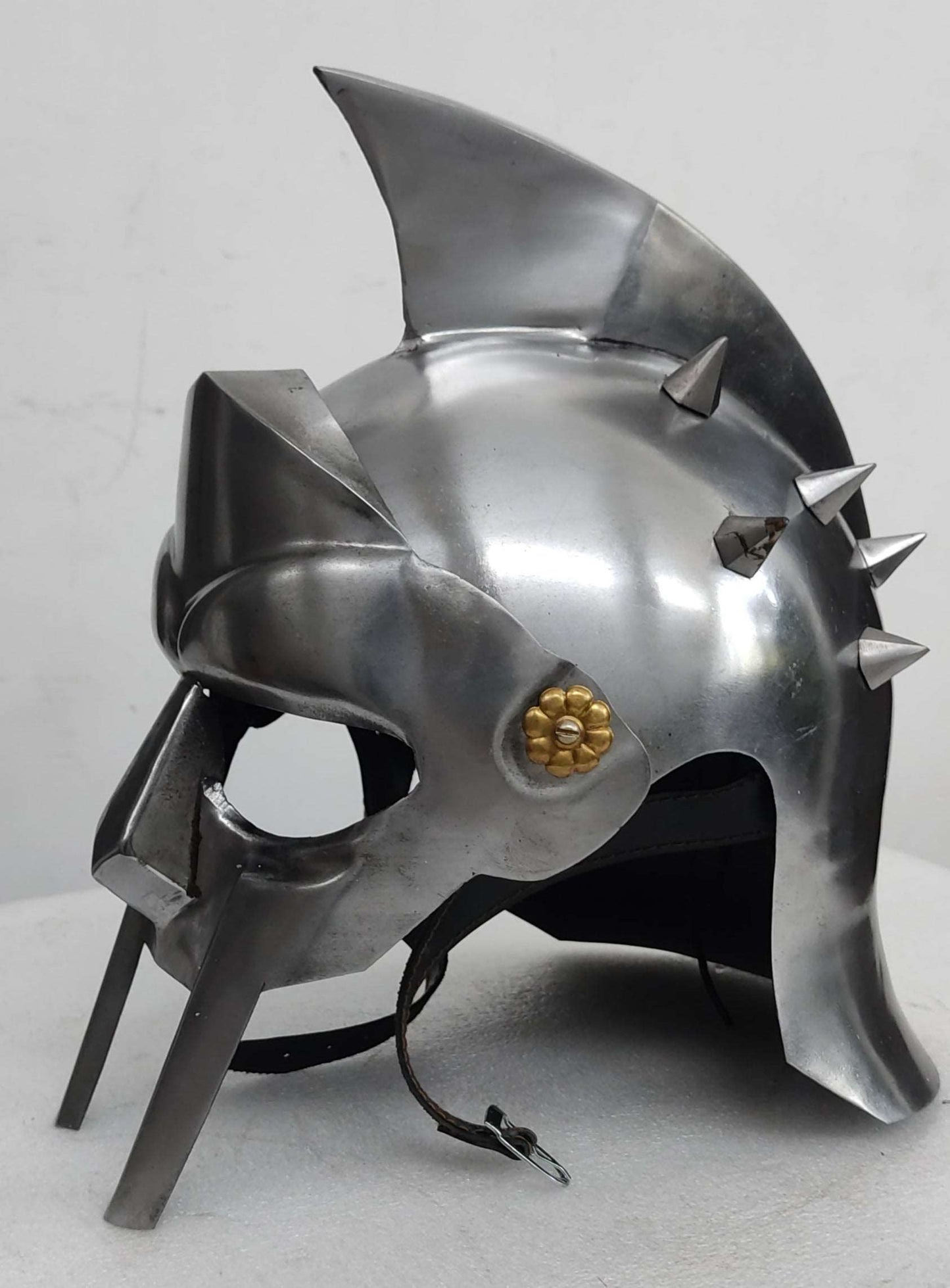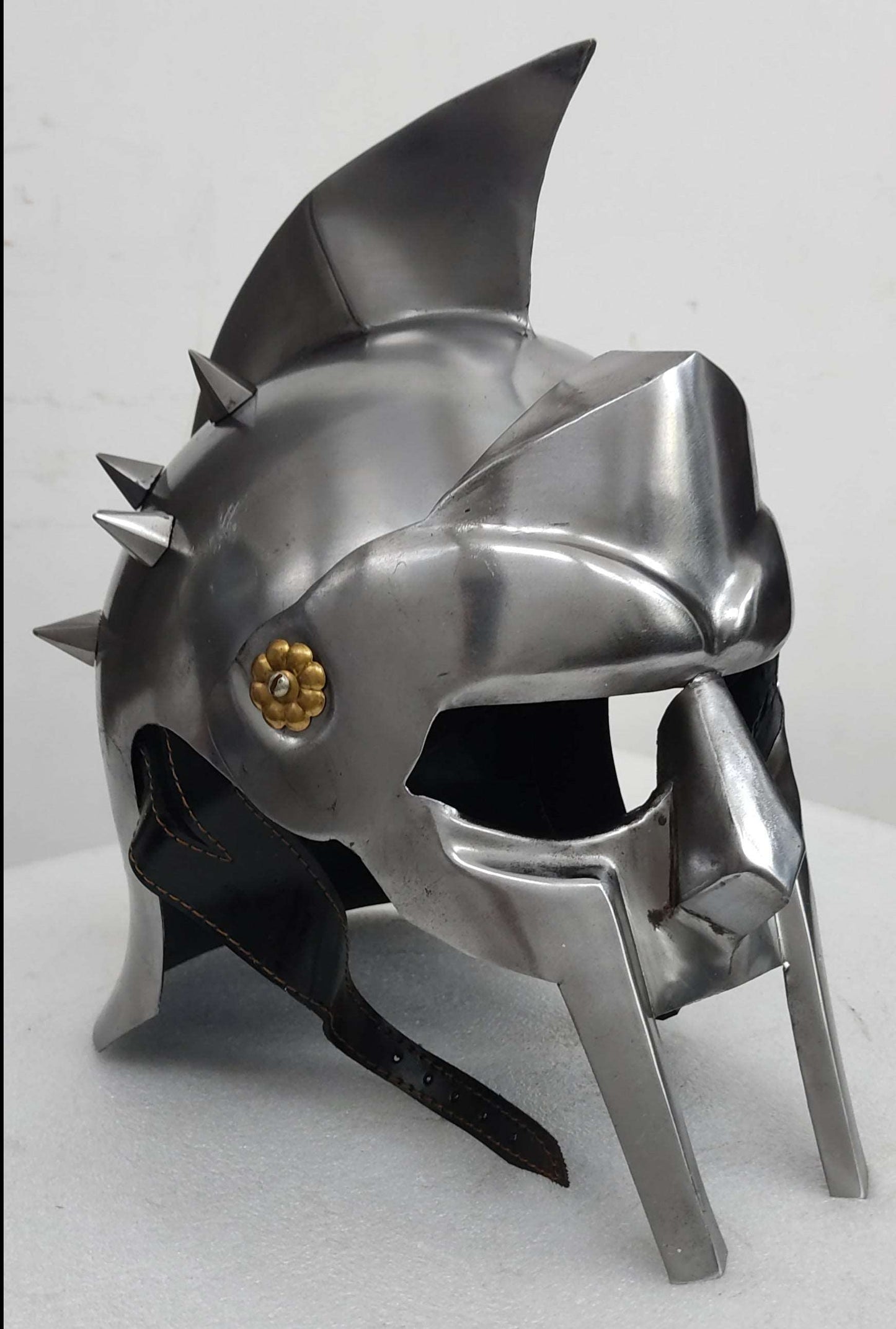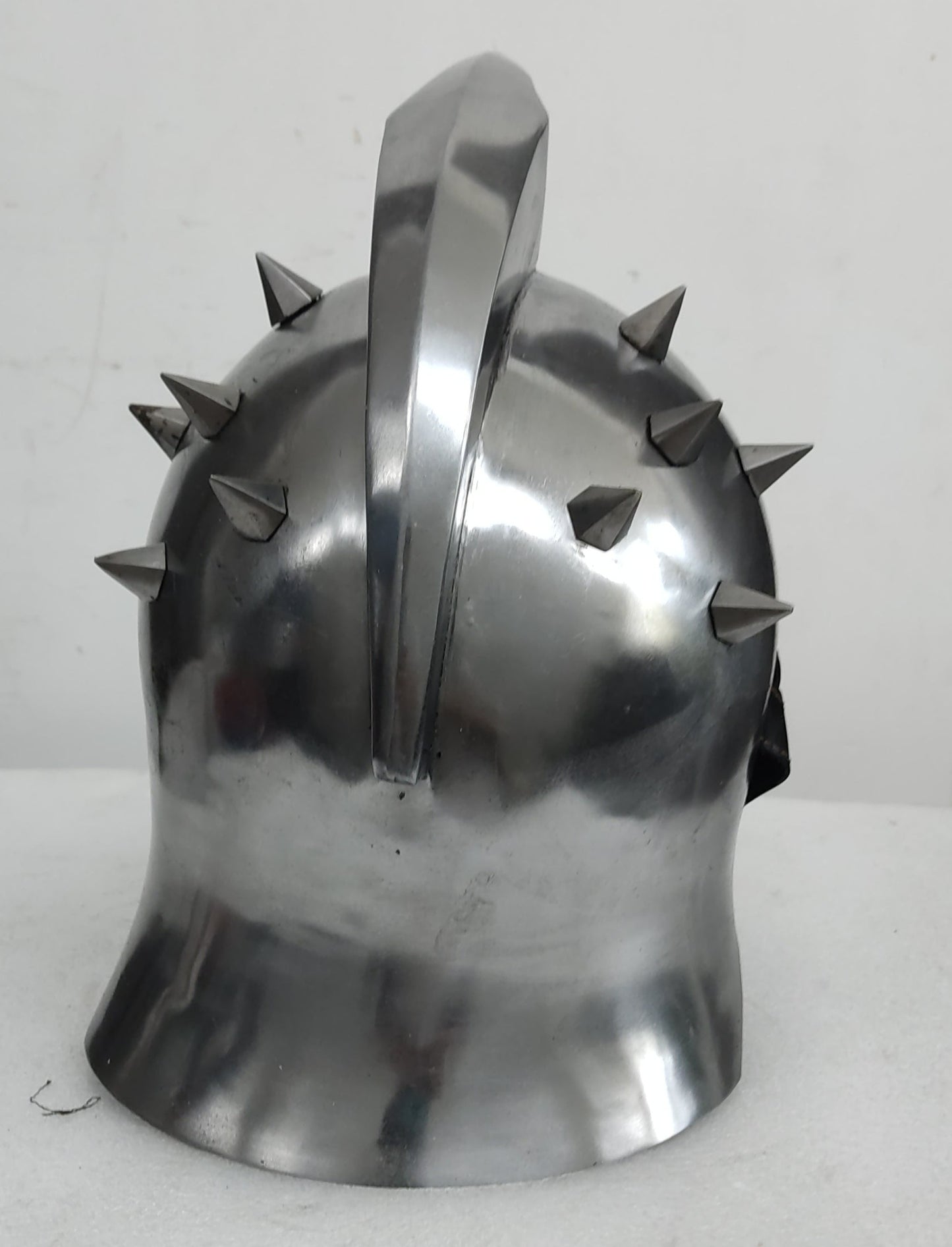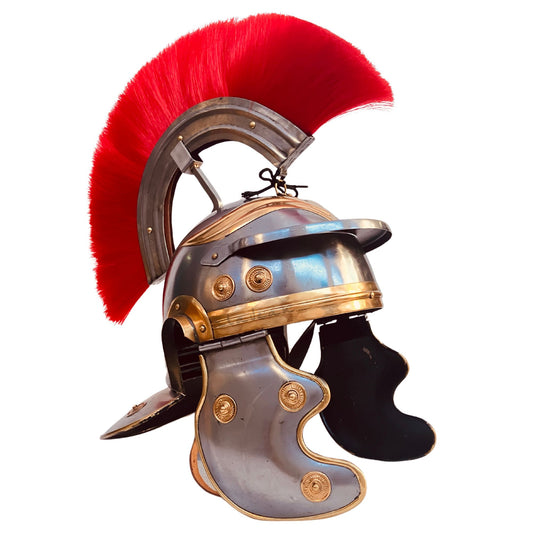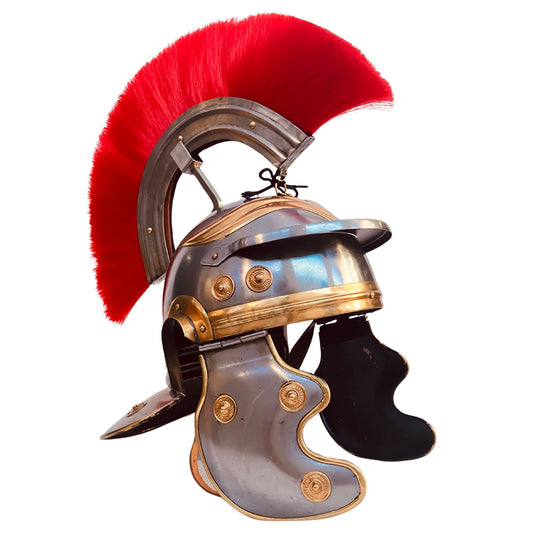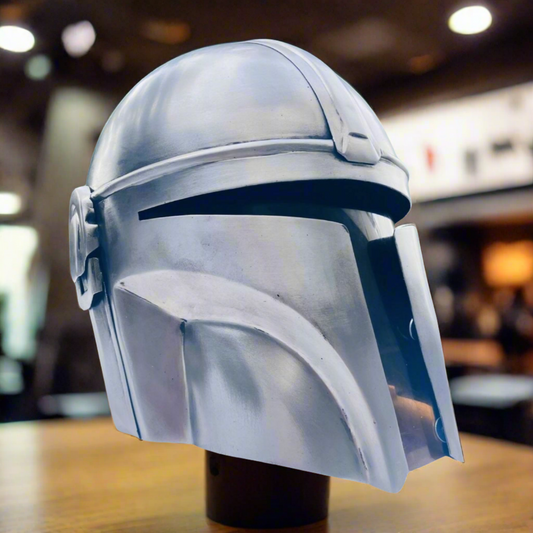The Role of Gladiator Helmets in Ancient Roman Combat
Share
Gladiator helmets are among the most iconic pieces of armor from Ancient Rome, instantly recognizable with their distinctive designs and symbolic significance. These helmets were not only crucial for protection in the arena but also served as symbols of the gladiator’s status and fighting style. In this blog post, we delve into the various types of gladiator helmets, their design, functionality, and the cultural significance they held in Ancient Roman society.
Historical Background of Gladiatorial Combat: Gladiatorial combat has its origins in the early Roman funeral rites, where slaves fought to the death to honor the deceased. Over time, these combats evolved into public spectacles, held in amphitheaters across the Roman Empire, most famously in the Colosseum. Gladiators were typically slaves, prisoners of war, or condemned criminals, trained to fight and entertain the masses. These games were not just about combat but were a display of Rome’s power and culture, deeply intertwined with its social and political life.
Types of Gladiator Helmets:
Murmillo Helmet: The Murmillo helmet is one of the most well-known gladiator helmets, characterized by its large, crested design and broad visor. The helmet typically features a high crest, often adorned with plumes or feathers, which added to the gladiator's imposing appearance. The broad brim and visor provided substantial protection, while the helmet’s design allowed for decent visibility. Murmillo gladiators fought with a short sword (gladius) and a large rectangular shield (scutum), and their helmet’s robust construction was vital in deflecting blows during combat.
Thracian (Thraex) Helmet: Thracian gladiators wore helmets with a distinctive griffin-shaped crest, wide brim, and protective cheek guards. These helmets were highly ornate, reflecting the Thracian's status and unique fighting style. The wide brim provided excellent protection against downward strikes, while the cheek guards protected the face. Thracian gladiators were armed with a small, rectangular shield (parmula) and a curved short sword (sica), designed for slashing and hooking attacks.
Retiarius Helmet: Unlike other gladiators, Retiarius fighters did not wear traditional helmets. Instead, they wore a galerus, a shoulder guard made of metal or leather, and sometimes a protective neck guard. The absence of a helmet allowed for greater mobility and speed, which was crucial for their fighting style. Retiarius gladiators fought with a trident and net, aiming to ensnare their opponents before delivering a decisive blow with the trident.
Secutor Helmet: The Secutor helmet was designed specifically to counter the Retiarius. It featured a smooth, rounded design with small eye holes, making it difficult for the Retiarius to trap them with their nets. The helmet’s limited visibility was compensated by its exceptional protection, allowing the Secutor to close in on their opponent with minimal risk. Secutors typically fought with a short sword and large shield, relying on their heavy armor to withstand the Retiarius’s attacks.
Functional Aspects of Gladiator Helmets:
Protection: Helmets were essential for protecting gladiators from head injuries, one of the most vulnerable areas during combat. The robust construction of these helmets, often made of bronze or iron, provided significant defense against swords, tridents, and other weapons.
Visibility and Ventilation: One of the main challenges in helmet design was balancing protection with functionality. Helmets needed to offer adequate protection while allowing gladiators to see and breathe during intense combat. Designs like the Murmillo and Thracian helmets achieved this balance with strategically placed eye slits and ventilation holes.
Weight and Mobility: The weight of the helmet was a critical factor, as it affected the gladiator’s mobility and endurance. Heavy helmets offered better protection but could be cumbersome during prolonged fights. Lighter helmets, like those used by the Retiarius, provided greater agility but less protection.
Symbolic and Aesthetic Significance:
Status and Identity: Gladiator helmets were designed to reflect the status and identity of the wearer. The elaborate designs and decorations indicated the type of gladiator and their fighting style, making it easy for spectators to recognize and follow the combatants.
Spectacle and Entertainment: The visual spectacle was a crucial aspect of gladiatorial games. Helmets with elaborate crests, decorations, and unique designs added to the drama and excitement of the events, enhancing the overall entertainment value.
Craftsmanship and Materials:
Construction: Gladiator helmets were typically made from bronze or iron, crafted with meticulous attention to detail by skilled blacksmiths. The process involved forging, shaping, and assembling the various parts to create a helmet that offered both protection and aesthetic appeal.
Decoration: Many helmets featured decorative elements such as engravings, crests, and plumes. These decorations were not only visually striking but also served to symbolize the gladiator’s rank and prowess in the arena.
Gladiator helmets were more than just protective gear; they were symbols of strength, status, and the brutal beauty of the gladiatorial games. Each type of helmet reflected the unique fighting style and role of the gladiator, contributing to the rich tapestry of Roman entertainment and culture.
Explore our collection of historically accurate gladiator helmets, crafted with the same attention to detail and craftsmanship that defined the originals. Whether you're a collector, reenactor, or history enthusiast, our helmets bring the glory of Ancient Rome to life.


